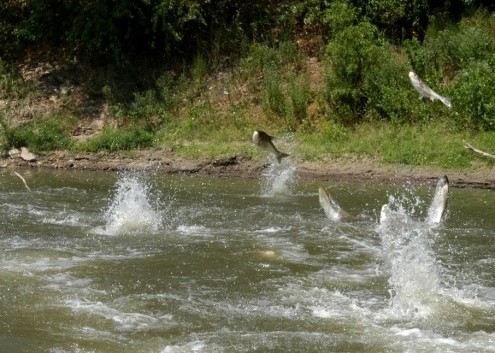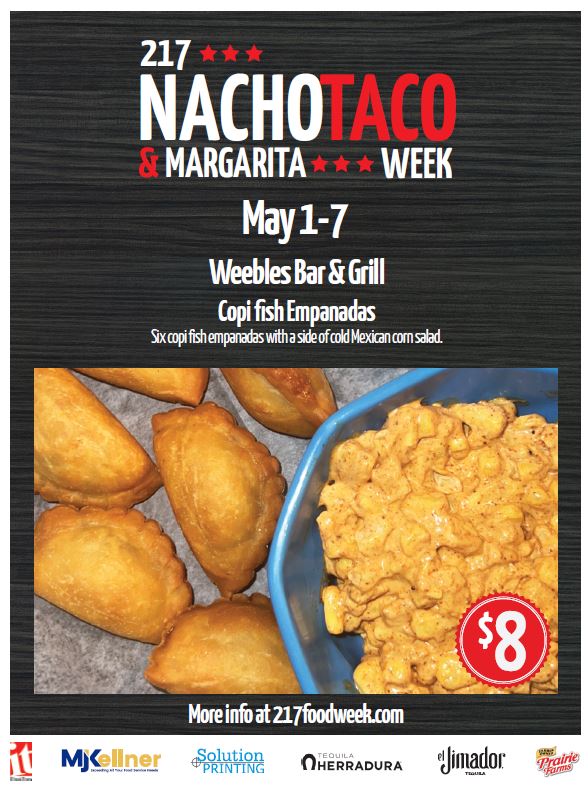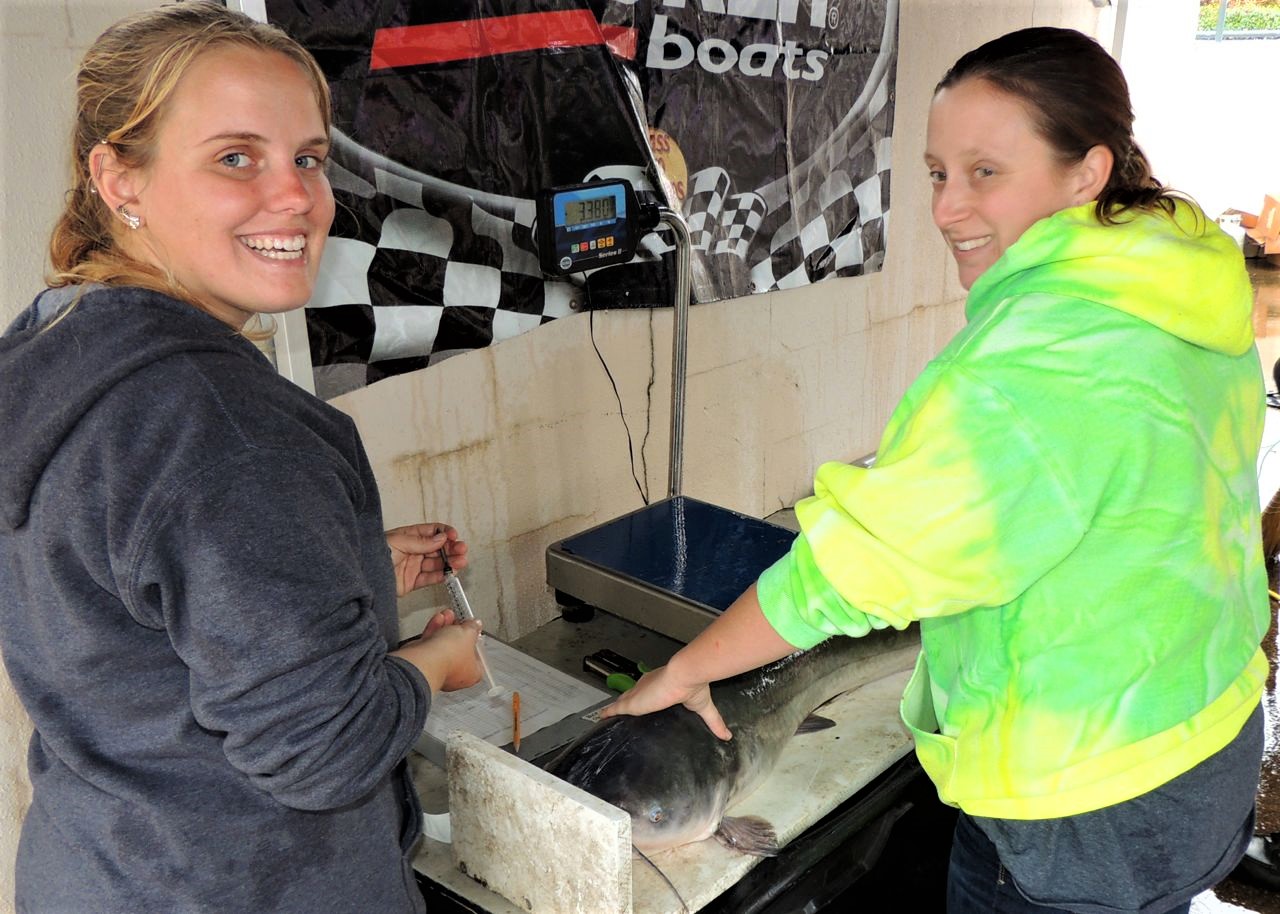Carp on the Dinner Table?
by Ron Presley
Bighead, black, grass, and silver Asian Carp are becoming known as Copi in the food industry.
There are not many anglers that have not heard of Asian carp. The bighead, black, grass, and silver carp are invasive species that were imported into the United States in the 1970s. They all fall under the moniker of Asian carp. They were believed to be a suitable method of controlling nuisance algal blooms in wastewater treatment plants and aquaculture ponds.

Unfortunately, the invasive carp have spread to rivers and lakes in the Mississippi River Basin and have caused significant damage to aquatic habitats. They are known as prolific breeders with a single female capable of having as many as 4 million eggs. They also eat constantly and grow quickly.
There are many suggested solutions to the problem in the U.S. that range from electric barriers on dams, physical barriers to movement, poisons, introducing predators, and developing projects that promote the carp as an edible product for the marketplace.
In Asia, the carp are known as a delicacy and markets already exist. Many researchers believe that the Asian carp problem could be improved in the U.S. if a market could be established that helped put the flesh of the carp on the dining table.
It seems that eating “carp” just doesn’t sit well with a lot of U.S. anglers. Almost everyone agrees some minds will have to be changed just to get people to try it. One prominent effort to change the stigma of eating carp comes from Illinois.
In 2022 the Illinois Department of Natural Resources (DOR) unveiled a new name for the otherwise disrespected freshwater Asian Carp. They decided to use the name Copi as an interchangeable moniker for the bighead, black, grass, and silver carp. The hope was that the new name would sound more palatable and help develop a market for the fish.

“Copi is a great name: Short, crisp, and easy to say. What diner won’t be intrigued when they read Copi tacos or Copi burgers on a menu?” said Illinois DOR Director Colleen Callahan in a statement. “It’s a tasty fish that’s easy to work with in the kitchen and it plates beautifully. Every time we’ve offered samples during the Illinois State Fair, people have walked away floored by how delicious it is.”
The statement further explained that Copi is a derivative of the word “copious.” A word that definitely describes these fish. The Illinois DOR estimates that anywhere between 20 million to 50 million pounds of Copi could be caught in the Illinois River alone every single year.
A quick survey on Facebook uncovered many more favorable comments than negative ones when it comes to eating Asian carp. Most comments indicate the possibility of promotion and growth of a small market for Asian carp that already exists.
Tennessee angler Jim Perry is among the proponents of eating the Asian carp.
“I have eaten them numerous times as they are sold here in Paris (TN) in a market where I live,” commented Perry. “They are boneless fillets. They are a great fish to eat. They are a little tricky to clean due to the excessive amount of bones but some people do clean them. Some people catch and clean them but leave the bones in and then pick out the bones after cooking. A lot of people are turned off from eating Asian carp due to the name “carp” hence the effort by Illinois to change the name to “Copi” for marketing purposes. Hope it works.”
Alabama angler and outdoor writer Alan Clemons also found the Copi edible. “Have had them fried and grilled. Fantastic when cleaned, prepared and cooked properly. Better than catfish, for sure, which typically are mealy or muddy, or both.”
Luke Hentges (FishOnLuke) is familiar with the Asian carp in his home state of Minnesota. He brings up an interesting fact about the invasive species.
“In terms of heavy metals and toxins within the meat, it is one of the best to consume,” noted Hentges. “Being how fast they grow, they don’t get the time to absorb them.”
“… they eat plankton in the top columns of the water,” responded Trevor Miller from Illinois. “Heavy metals sink. (Also) they don’t eat other fish that contain contaminants. And they have no stomachs to hold the food.”
Final Thoughts

It didn’t take much research on the subject for me to determine that I would definitely give Copi a try. The biggest drawback seemed to be the boney nature of the fish. Cleaning them seems to be a bit of a challenge but the outcome appears to be worth the effort.
“The bones are the major sticking point for most people,” noted Tom Barse who harvests his carp with bow and arrow. “Cleaning them isn’t really a treat either in my opinion. However, they’re probably one of the finer eating fish in north America…. You’re really doing yourself a disservice if you haven’t given them a serious try.”
For more information on “How to CATCH CLEAN & COOK Silver Asian Carp” visit Quinton Robbins’ (CATFISH KARMA) website for an informative and educational video.
Author’s Note: Thanks to all who shared their experience of eating Asian carp. And remember, they make great catfish bait too.



